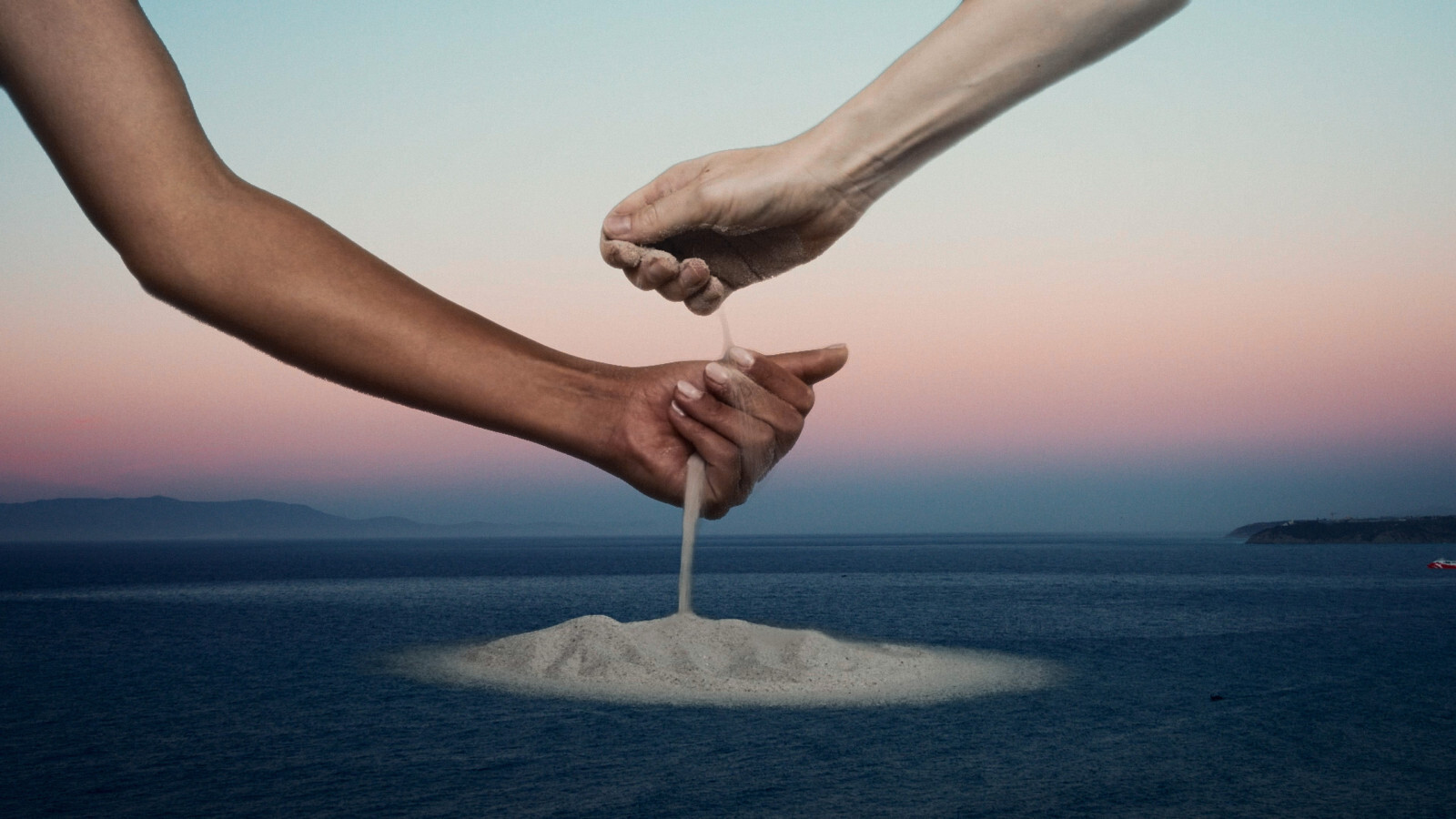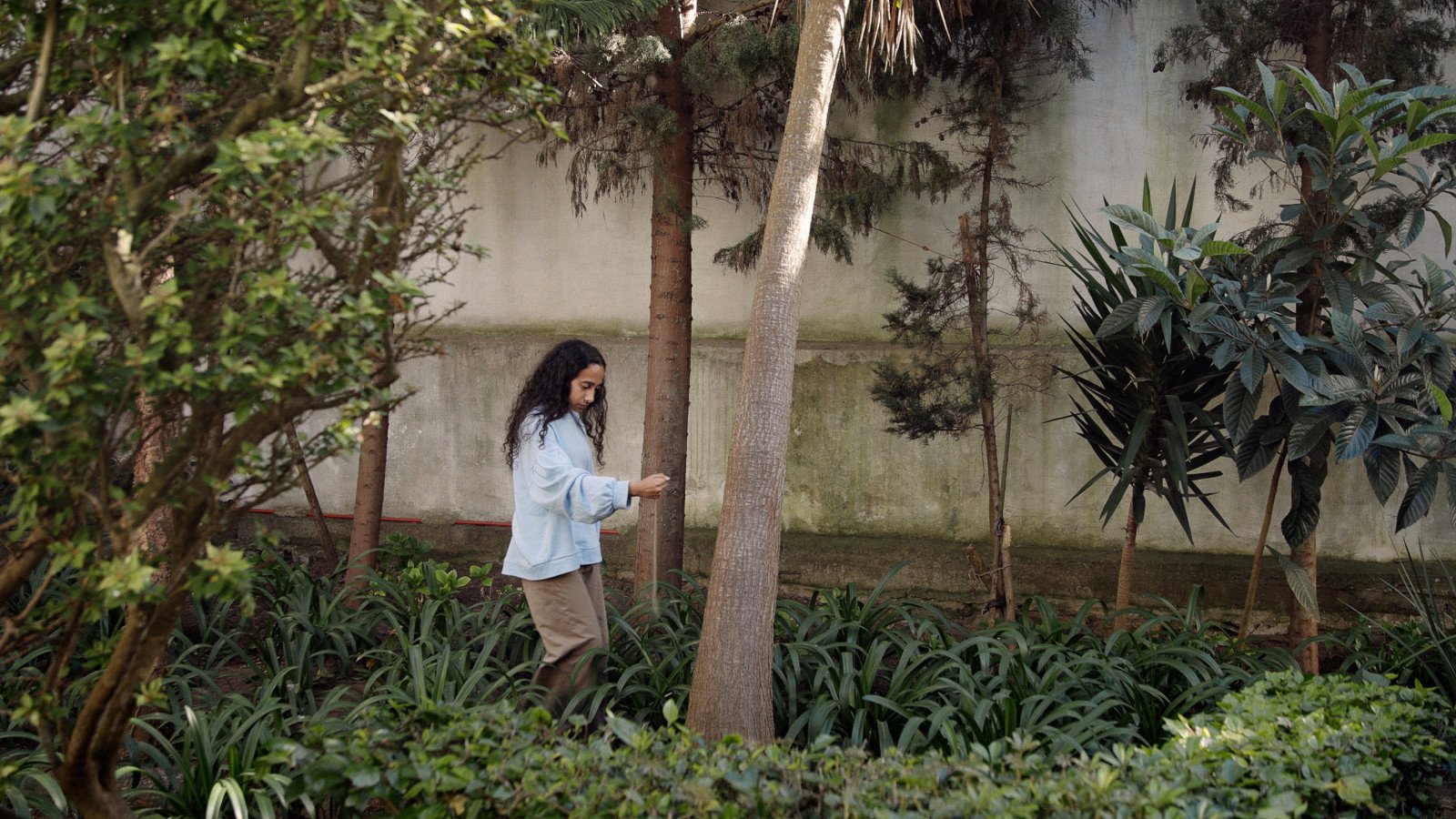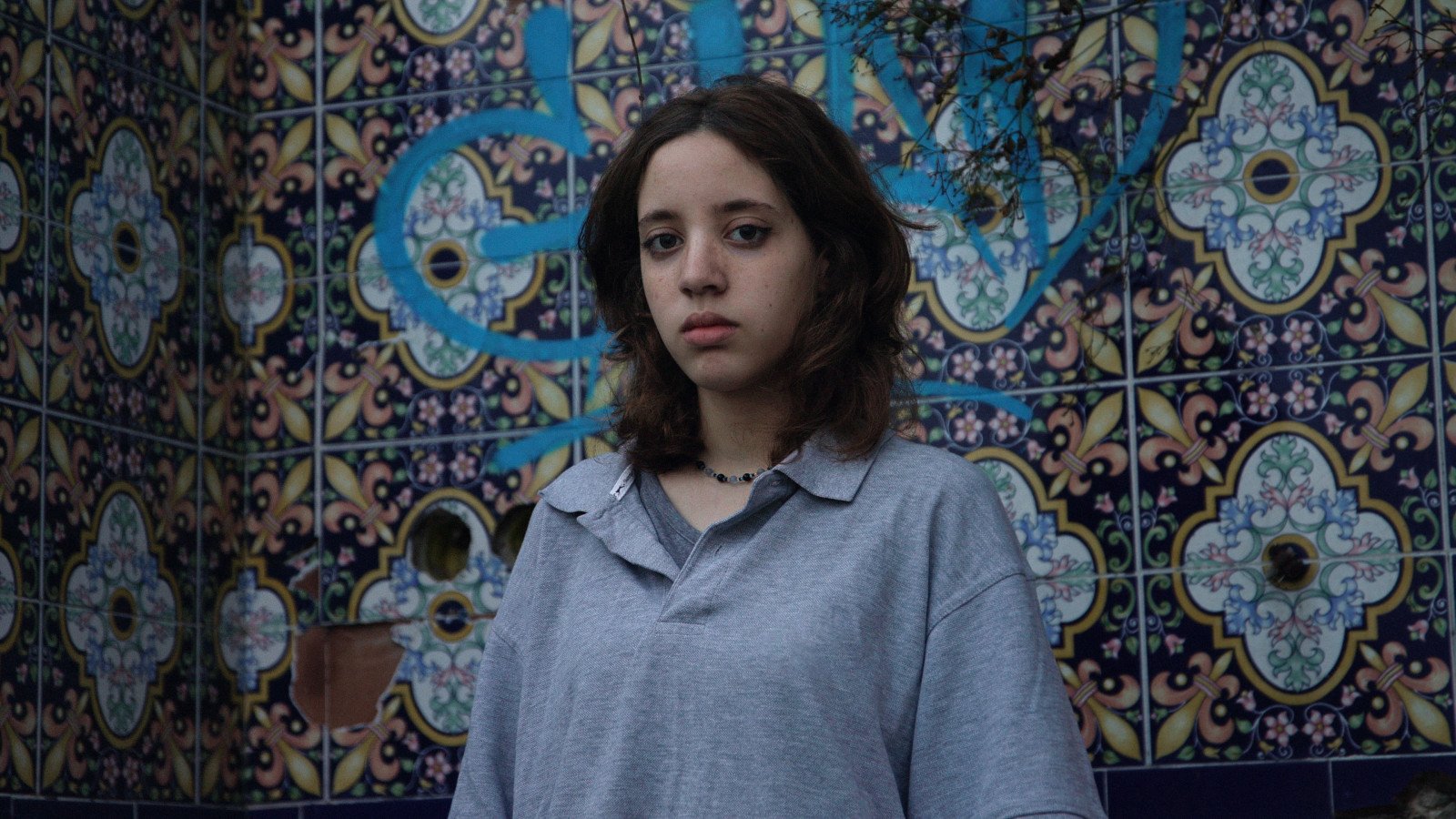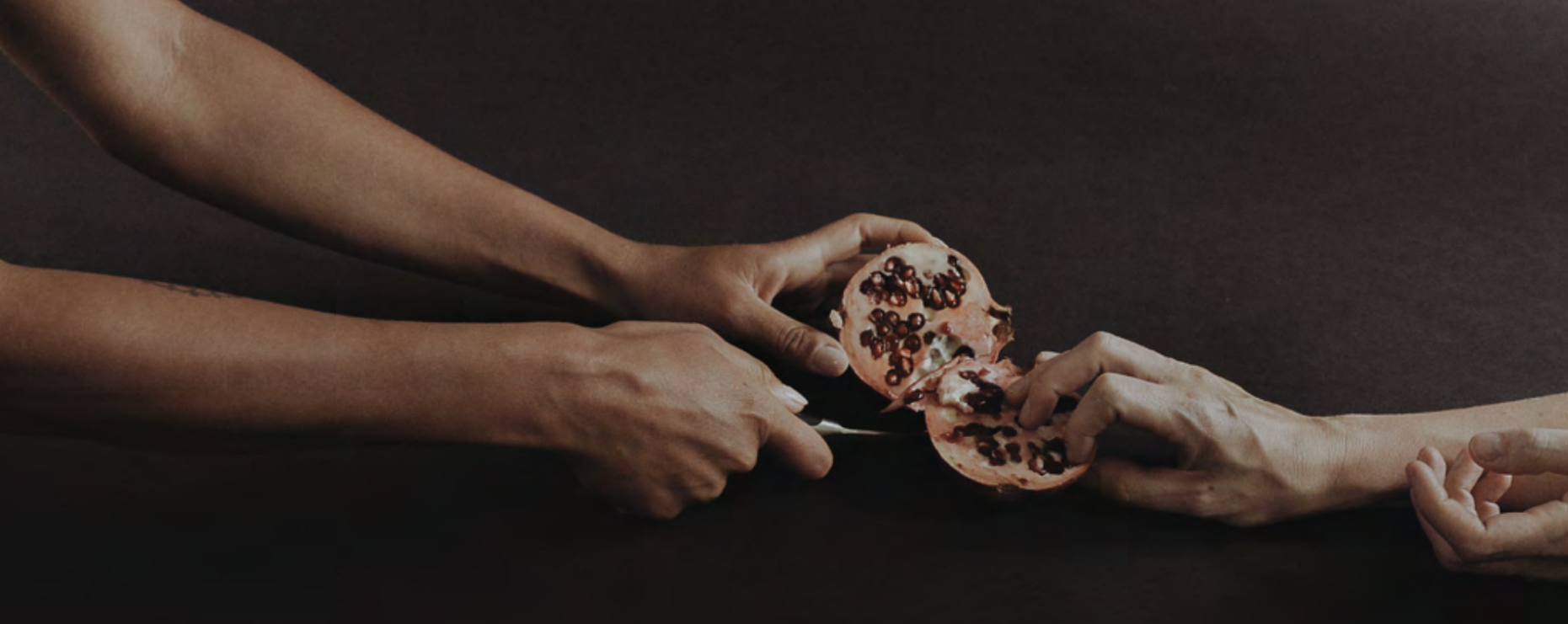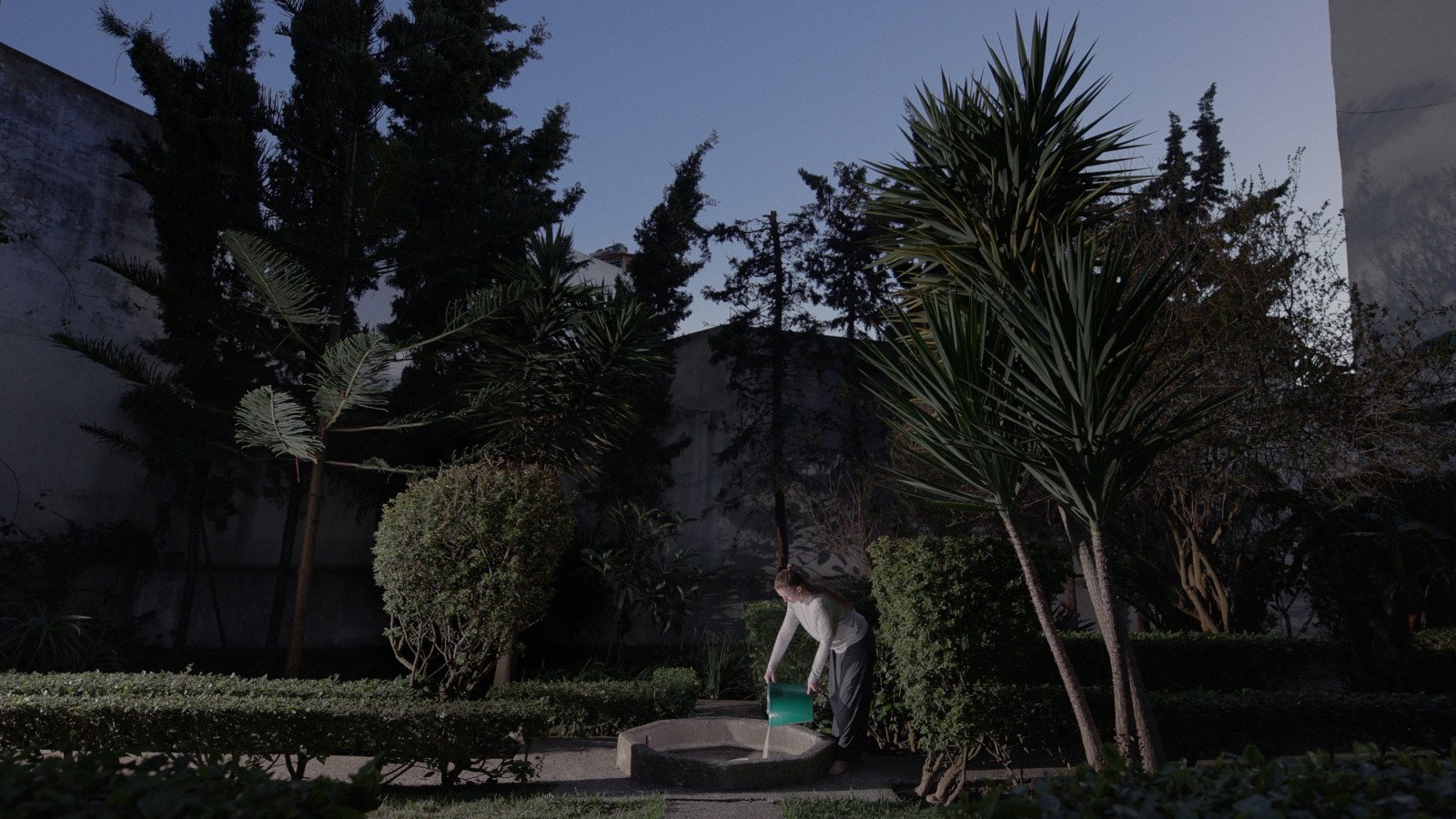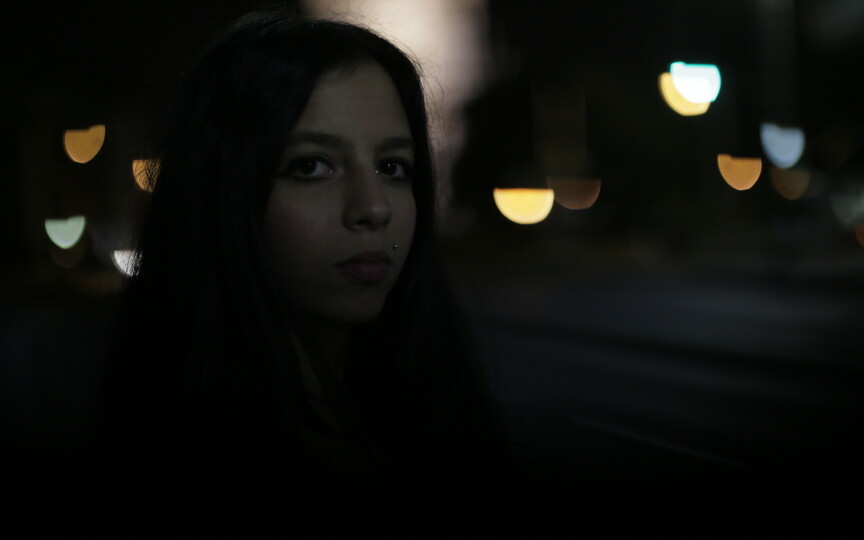To express a common idea or feeling. Lia Sáile
While attending the Ji.hlava documentary film festival filmmaker and artist Lia Saile described how she reflects on power relations on set during filming and how she translates her principles of equality and collaboration into practice. Her film Scattered Sea, competing in this year’s Fascinations section dedicated to contemporary experimental cinema, is a subtle manifesto of the possibilities of a feminist approach.
In the film Scattered Sea, many images and ideas revolve around sand. What draws you to it so much?
I love the materiality of sand so much, I work with it a lot. Because it’s this very shapeable and buildable thing—we think about children’s playgrounds; we are building these small castles. But sand is also in all this kind of concrete architecture, like giant buildings, everything is full of sand.
And at the same time it’s a symbol of time, running around; it’s fading and it’s ephemeral. You can’t touch it without it being gone or changing shape. It’s beautiful that you can blow it. Sand is the “in-betweenness” again — between intense, dense material and something light, ungraspable, flimsy.
What does sand serve to express for you in the film—what kind of thought?
I perceive it above all as a way of the ephemeral and ungraspable shaping or forming of your surroundings. Even if you just make a line or a circle, people try to read it, to understand what it means—but maybe it doesn’t mean anything at all. It is just there, and it’s there to be experienced, and then you can just wipe it away and do something new. It is a way of structuring and negotiating space in a potentially non-invasive way.
Sand is very experimental: you can touch it, you can play with it randomly, and you don’t have to create something—but you can. This openness is like an invitation for something to happen with it. Whatever happens, it will not persist. The castle your child builds in a playground will not be here tomorrow. It will not remain on the beach when the waves catch it. I think sand is a perfect material—both for a giant architectural building, construction context, and for the playfulness of a child. Intentional work with sand is, for me, healing, maybe even meditative.
In the film, when one performer slowly and attentively covers the ground with ornaments that look like Arabic characters. Is that a case where the signs don’t mean anything at all?
The performer writes a word that has meaning, but on set I didn’t know what it meant. And I’m glad about that. During filming it was important for me to create an allowing space for something to develop that I’m not perfectly in charge of.
Of course, we discussed the word with the group of performers— there were 17 performers from Morocco and Germany. A small selection of them worked on the content of sand writing scene with us. They were looking for a few different words and kept coming back to them. But then they found it, and when I saw they agreed on it, I said “Okay, let’s use it”.
I asked them what it means, but they couldn’t translate it. “Something like living together,” they said. I was actually lucky, because if they had known how to translate the word, maybe I would have started adjusting to it. I learned later that the word means “coexistence.”
التعايش
The German word we proposed is Weite, “vastness.” We meant this wideness of space, whichever space that is, that you can occupy. And the performers said they think it works well with their word. So we were like: “Okay, we inscribe into each other in different languages, in sand that you can move”.
When, at the screening, I found out that “vastness” also appeared in the title of the block into which my film was programmed, I was very happy.
The film captures individual and shared, synchronized movements, conscious movements, “numbers,” maybe dances. Yet you speak about “performers,” not dancers. What’s the difference?
The performative is precisely that it’s not choreography. Of course, we planned some things, for example that we could go over here with the sand. But the decisions about how fast they walk, how low they are—that was theirs and mine in exchange within the moment of creating it.
I did not tell them. We looked at it together and we agreed that we have to stand higher. But it’s not a choreography where you know exactly what’s gonna happen. We didn’t even know where they would end, or if the camera would follow or not.
Sometimes we didn’t even know. We would say: “I think you should join, I think you should walk into the scene as well”. And then they would just take sand and walk into the scene, and new things would happen. I think that’s the beauty of performance when they are spontaneous as well.
It’s hard to express a common idea or feeling. You have to be very precise and intuitive, actually, about every small gesture and movement. Are they closing their eyes or are we closing our eyes together?
They start swaying; I start swaying as well. It’s about being interconnected, to move around space together in a very conscious way, create a hybrid space between all of us, and then dissolve it again and go home.
“Filming, for me, is also about the power balance—about how people are scared of power, or think power is something bad.”
You yourself appear in the film. Was that a hard decision?
I thought about it for a long time, as in artistic performance practice, this is often avoided, to avoid the power imbalance. I first asked the group if they were okay with me being present. They could have said no, and I would have relieved myself. I explained to them and to my crew that I feel it’s crucial not to be just present and directing from the outside.
I wanted to be there and to feel the same dynamics while they are happening, and to have to react to them myself, unprepared and not knowing what happens next—to expose myself to this unknown and this unplannable creative portion of the work. That was essential for me.
Filming, for me, is also about the power balance—about how people are scared of power, or think power is something bad. Politically it’s always connected to political power and dictatorship and having power over somebody. But power can also be shared and discussed and passed on. That’s why it was important for me to be in this performative context myself and challenge the dynamics of power together.
It seems to me the film is performative in a deeper sense—not only by showing performances, but also in the way of working: by putting into action, during the shoot, the philosophy that interests you and the ideas you hold.
It’s always nice to have all these ideals and say, “I’m a feminist, and I want things to change, and we should have not the pay gap, and we should have equal working hours and childcare,” and all of those topics. I can make a movie about those ideals. Or I can make a movie living by those principles.
And you can do that in any kind of job. In this case, I decided to invest time and resources in an experimental family film set with crew member’s children and babies and more care takers present. It’s always very hard and very strenuous. It takes a lot of work and planning.
In the end, instead of a four-people crew, there are like ten people flying to another country. And that eats up a lot of money. But it was an intentional and conscious decision to do that, even if it means taking it, in a way, out of the artwork.
We could have produced something else with it; we could have made very visual-effects stuff but I prioritized the production mechanism and its ethical background and its ability to change the way that I and we work, to be an example, and to try something that is rarely done or is done out of desperation. Mothers sometimes bring their baby on set or try to hide the difficulty of organizing care for it and don’t tell people they have children.
It’s especially the female perspective, men don’t have that problem, because people think the mother will, of course, take care of the child while he’s filming. But I am the one—the director, or the camera woman, or the sound woman—and I have a child. People will be like, “Where is your child? What’s happening with them?” Men don’t get the same questions.
How did the shoot go? What kind of crew did you work with?
It was mandatory for me that it’s a mostly female crew. I was very excited that the sound woman agreed to come even though her baby was half a year old. She was a first-time mother and said: “Yeah, sure, no problem.”
We lived in one house in Tangier together, where we filmed many scenes. We scheduled the whole days around the babies’ sleeping—second and third nap times—their feeding, and making the food for them (which the fathers mostly did), and the nursing.
“I wanted to include people the system would otherwise exclude.”
We had all the troubles you can have on a film set like that. And we also had very intense discussions on site because of different expectations—of the fathers, of the mothers, and of how we thought this was going to go. There were lots of troubles and lots of conflict—which we solved, I think.
But it’s important to do those things and to anticipate and know that you will have these problems, because you can’t solve them and make them manageable in the real world unless you go there. That’s the key: to make a shift in how we cooperate and how we create our own working context.
I wanted to include people the system would otherwise exclude. As a mother I would be excluded from art. I should be at home, or work with a lot of sacrifice. And above all, not talk about it. I should be tired, but not say it. I should function, be professional, smile.
I wanted to make an integral point that everybody agrees on. There is this word in German about the family-friendly schedule which cannot even be achieved in the high-budget film industry.
But we wanted to be a real-life example without the budget. This was a family set, with all the struggles it brings. It was crazy. It was very intense; people were very tired; we didn’t sleep much. And we learnt so much, it was inspiring – an amazing experience.
Did it pay off for the film itself in the end, or was it all “at the expense of the artwork”?
Not only when shooting a film, but even in theory, in philosophy—when you’re writing and researching—you can become this tunnel, sucked into a very specific focus. But when you have your family around, you have to stay human, you know?
You can’t just prioritize your work—but in a good way, because it always gives you this outside perspective: “Yeah, we’re eating now.” Otherwise I would forget eating when I work. But this way I had to eat. I had to have a break. “OK, so we all have a break now.”
It was really hard; I felt like we just had to do this. But those purposeful breaks for the little humans were good—and for them it was an experience: “What are they doing? They are peeling a pomegranate!” my 3-year-old daughter commented for example. And they were playing with the pomegranate seeds in between and stealing stuff.
In the installation version of the film you can see the little hands and little feet. I included them. In the film version you only hear my daughter’s voice: there’s this scene where the performers are sitting in the middle and the sun is going down and it’s getting dark; she asks: “Can I go to the sea?”
You can hear the camera woman going “uh-huh”, as I was preparing something a few meters away And I left it in. I could have easily edited it out,it’s my child; nobody would have to know. But that’s the point—integrating these different parts of life into art.

